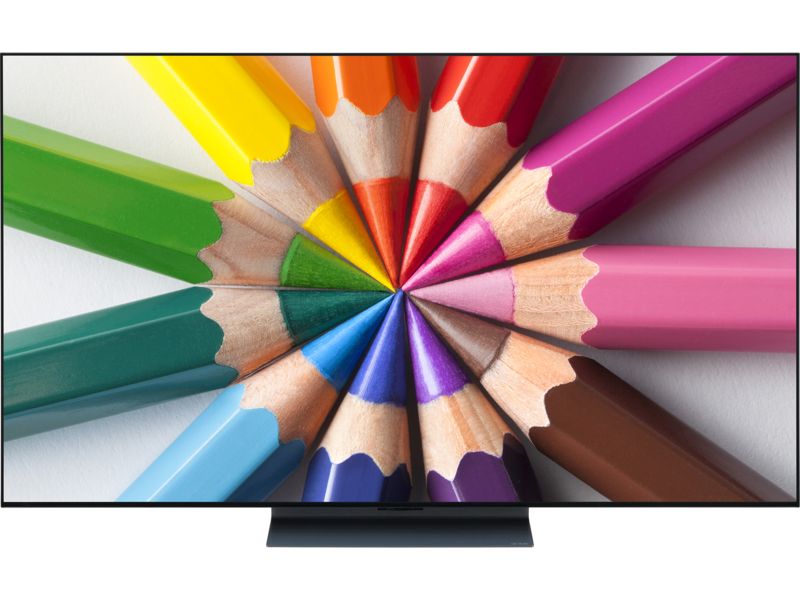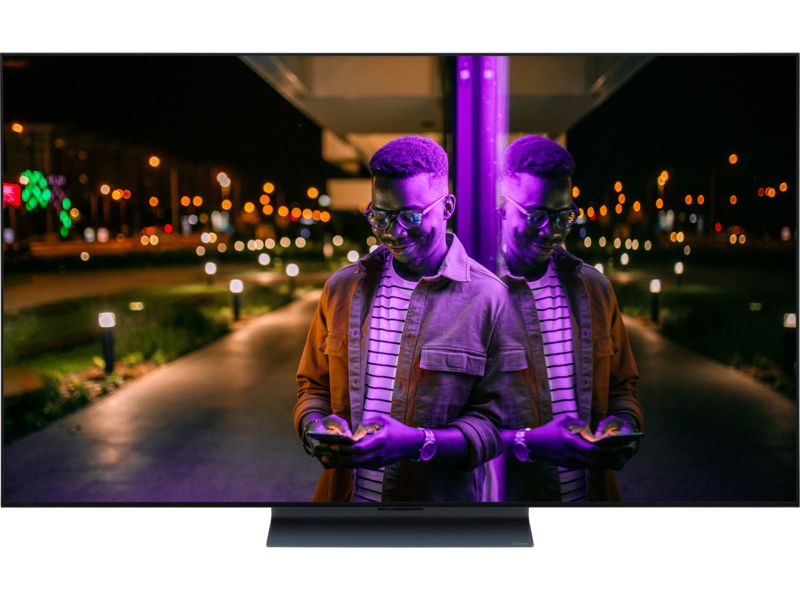What is QLED TV?

Samsung remains resolute in its belief that its own QLED technology is just as capable as OLED when it comes to the best-quality picture, although even it has succumbed to the popularity of the OLED TV and released one itself.
Samsung has iterated on the technology significantly since it debuted the QLED branding in 2017, and the majority of its range, from mid to high end, uses some form of this tech.
Is Samsung still right to favour QLED, or will more of its high-end TVs switch to OLED in years to come? We explain how QLED technology works and see how these TVs compare with OLEDs, as well as LCD and LED TVs.
Just want to know which TVs are best in our tough, independent tests? See our expert pick of the best TVs
What is a QLED TV?
- The Q in QLED stands for quantum dot. These miniscule dots form a layer in front of the backlight and create the colours you see on screen.
- Most TVs are LCD and use liquid crystals (the LC in LCD). Quantum dots are an extra layer.
- Samsung pioneered QLED technology and debuted it in 2015 before unveiling the QLED branding in 2017. Now you can find quantum dot displays in all its high-end sets.
- You can spot a Samsung QLED set by its model name, as it will always start with a 'Q'.
- A few other small brands make QLEDs, too, but Samsung is the only one of the big four manufacturers (LG, Panasonic, Samsung and Sony) to make them.
- Quantum dots are said to produce more vibrant colours and brighter images.
To see which of these mid to high-end TVs are worth buying, take a look at our QLED and Neo QLED TV reviews
What is Neo QLED?
In 2021, Samsung launched its first Neo QLED TVs. They still have the same quantum dot technology as standard QLED sets, but the backlights have much smaller LEDs, called micro LEDs, which means better contrast and more control over what parts of the screen are lit. This should minimise blooming and light leakage, where brighter sections of the picture bleed into darker ones.
Neo QLEDs are thinner, too, because the LEDs in the backlight are thinner.
QLED vs LED
LED simply refers to the backlight and the bulbs in it. They are still shining onto a layer of liquid crystals just as they do with an LCD TV. LED and LCD are near enough the same.
The same goes for QLED. The LEDs in the backlight illuminate liquid crystals, but there's an extra layer of quantum dots designed to boost colour and vibrancy.
This extra layer should make QLED technology the better choice, but it's not a certainty that a QLED TV will beat an LED one. However, there are far more LED and LCD TVs than QLEDs – and as most brands use this technology, there's a greater spread of scores from our tests.
Neo QLED is reserved for more high-end models, and QLEDs are typically mid-range, which means they have better features in addition to what is, on paper, a better screen type.
There are high-end LED TVs, though. LG, Panasonic and Sony all make them and several are Best Buy TVs, so you shouldn't assume a QLED TV will be better.
Learn more about LED and LCD TVs and the differences between them.
Is OLED better than QLED?
Of the four leading manufacturers, Samsung stands alone in supporting its QLED and Neo QLED technology: LG, Panasonic and Sony all choose OLED displays for their high-end sets.
You can look at our guide to OLED TVs to learn more about them, but the key distinction is that OLED displays don't use backlights; every bulb in the display is self-emitting, which improves contrast control and motion fluidity. Samsung believes QLEDs displays are brighter and show more vivid colours.
- Price Whether you're buying an OLED or a QLED, you're going to need to fork out a fair bit of money. Go for the top-end of either and you can expect to pay around £2,000, but where the cheapest OLED will tend to be around £1,000 at launch, some QLEDs start at around £800.
- Size OLED and QLED TVs are available in a range of sizes from 42 inches all the way to almost 100 inches.
- Spec The technology in the TVs differ slightly from brand to brand and each will have its own unique selling point, but some things are consistent. They will always be 4K, support HDR and be smart. No matter if you choose OLED or QLED (particularly Neo QLED) you will typically get the very best TV technology available from that brand.
One screen type isn't necessarily better than another, it simply comes down to each TV. We've tested OLED sets that missed the Best Buy mark and there are QLED sets that don't manage it, either. OLEDs tend to be more high end overall, while QLEDs now make up near enough half of Samsung's annual lineup.
What about QDOLED?
In 2022, Samsung released its first OLED TVs, which also included quantum dots. In combining the two technologies, Samsung believed it had created a TV that had all the benefits of OLED technology, with added brightness and colour vibrancy from quantum dots.
It has since dropped the 'QD' and will release OLEDs in 2023, but they do still include quantum dots.
Should I buy a QLED TV?
There are no guarantees in the TV world. Price, brand, screen type: none of these necessarily make a Best Buy TV. Some of the best TVs we've ever tested have been QLEDs, but we've also found ones that didn't make the grade.
You shouldn't necessarily rule out LCD displays, either. They are generally cheaper, but some are just as good or better than many QLED sets.
If you want the best of the best, then you must consider OLEDs as well as QLEDs. To dismiss any one screen type would be limiting yourself unnecessarily.
See our favourite TVs in our guide to the best TVs and discover how many QLEDs made the grade.
Tech tips you can trust – get our free Tech newsletter for advice, news, deals and stuff the manuals don’t tell you



